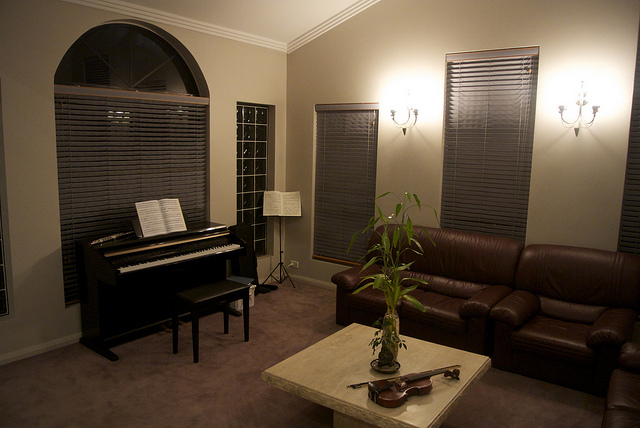Share the post "Tips for Lighting Your Home Like a Pro"
Lighting can make or break the look of home decor. It can add warmth, create a mood, the right atmosphere, and define the space or if it goes wrong can make the scene seem dull, make you sleepy, cause headaches and sometimes even cause accidents when working on simple tasks.
This important and seemingly daunting task is also unfortunately the most overlooked aspect while decorating. But worry not, we are here to make it easy for you. The next time you are giving your home a do-over, make sure your includes the right lighting fixtures.
The thumb rule of lighting is to opt for layers
While the size of your room will determine the right pick, usually a mix of ambient, accent and task lighting instead of having one large light will go a long way. It also helps to add table lamps of different sizes on the shelves, it adds character along with the right mood.
As far as possible keep all the lights in your house close to the same color
When buying new bulbs make sure you check the color temperature published on them. Keep the lighting to a warmer shade in the bedrooms and living room and choose the cooler share for kitchens and garages.
Use lights to draw focus to the space you choose
Instead of opting for uniform overhead lighting, pick lights that draw focus to certain spaces or areas. Got interesting art on your walls? Then try using spot lights. Interesting decor on shelves? Interesting table lamps would look great! Use soft indirect lights or pool lights for socializing areas.
Keep different parts of the room at different brightness levels to prevent what is commonly known as ‘lighting fatigue’. Creating texture in lighting and playing with shadows breaks the monotony and make the environment more relaxed.
Appropriate the lighting based on the functionality of the space
Meaning, chose the lighting based on the room. Here are a few tips:
- Living Room: Light the far corners and focus one or more of these lights on pieces of art or on an interesting object. Use some lamps with a downward glow and some that shine upwards.
- Dining Room: Make the dining table the brightest spot in the room. Avoid much lighting elsewhere, and if required, make sure it is indirect lighting only.
- Kitchen: Focus your lighting on the counters and the cabinets. Illuminate your work area. Create an illusion of visual height by adding lights to your top cabinets. It will guide the eye upward and cut out the dark shadows.
- Bedroom: While it is obvious that one would opt for warm, cozy lighting the height of the lighting is crucial in this case. Bed lamps should be placed below eye level and around two feet above the mattress height.
- Bathroom: The best lighting around the mirror is sidelights. No shadows and hence better clarity.
- And lastly don’t forget to illuminate stairs and hallways.
Don’t hesitate to include dimmers or smart lighting solutions. The convenience is worth it. But do make sure that the technology you opt for is 100% compatible to the rest of your lighting.
And lastly, don’t forget to enjoy the process and let the lighting reflect your personality. Use DIY lamps or a mix of different designs. Get creative!
Share the post "Tips for Lighting Your Home Like a Pro"









 EN
EN  RU
RU